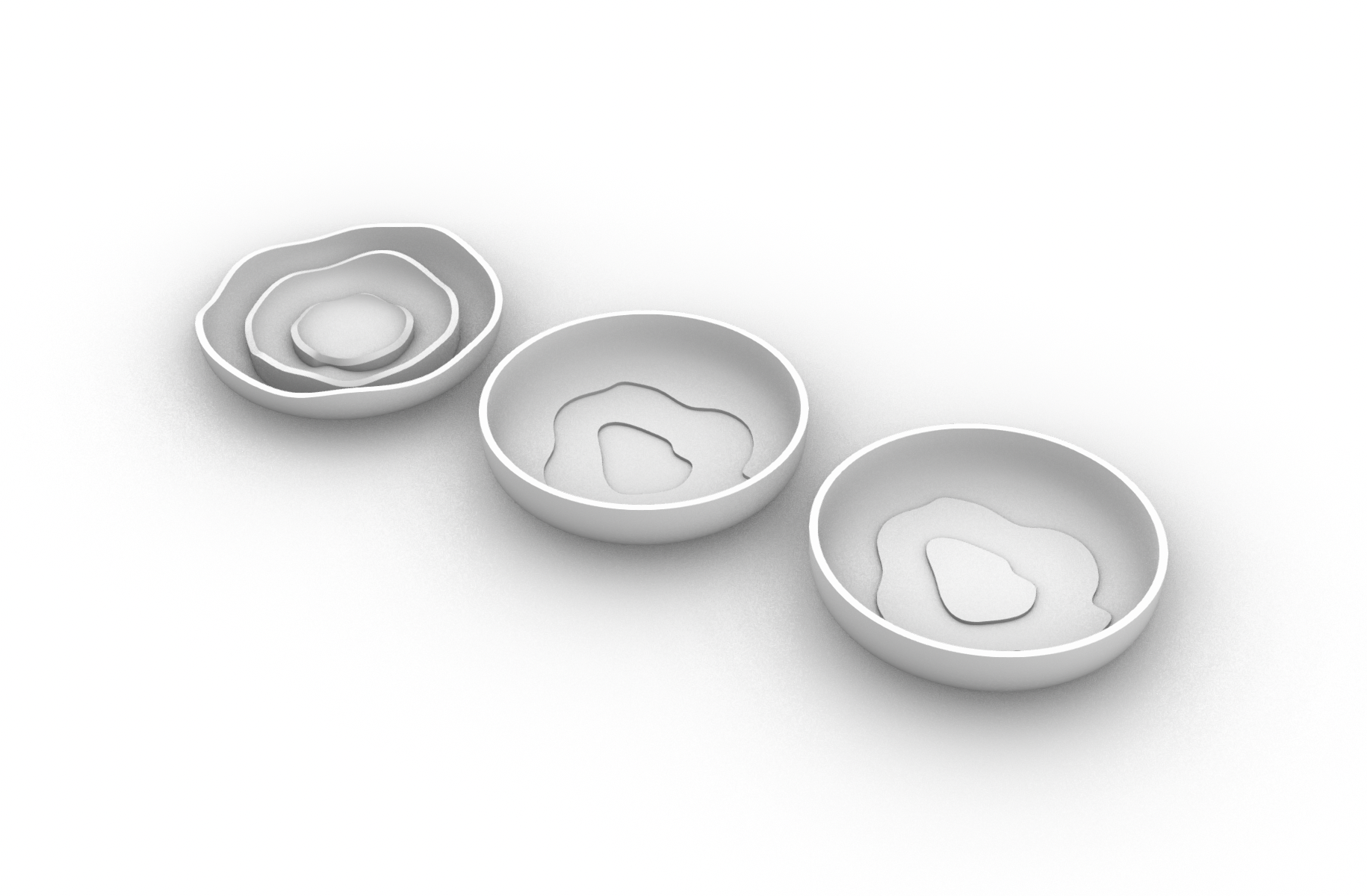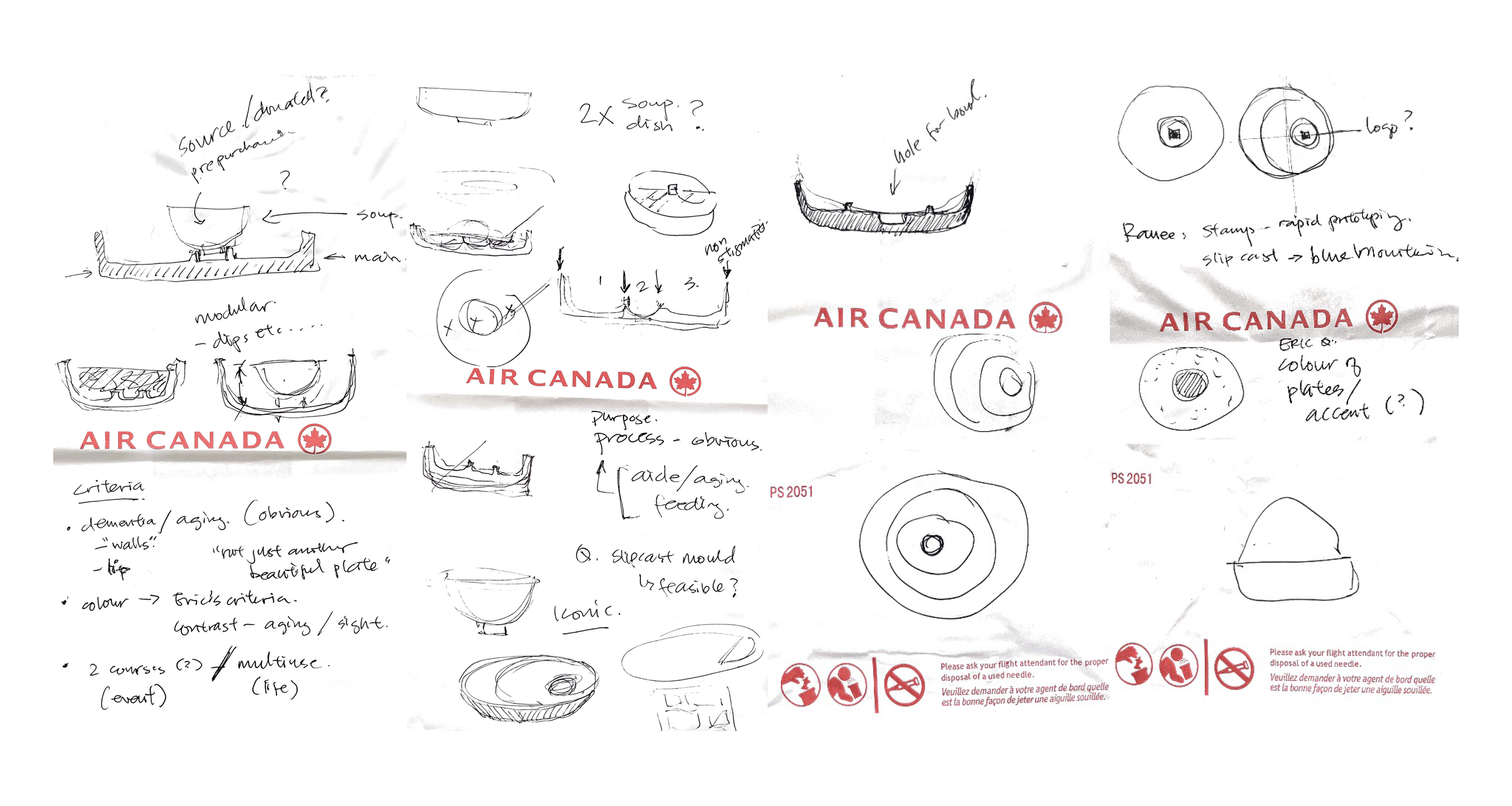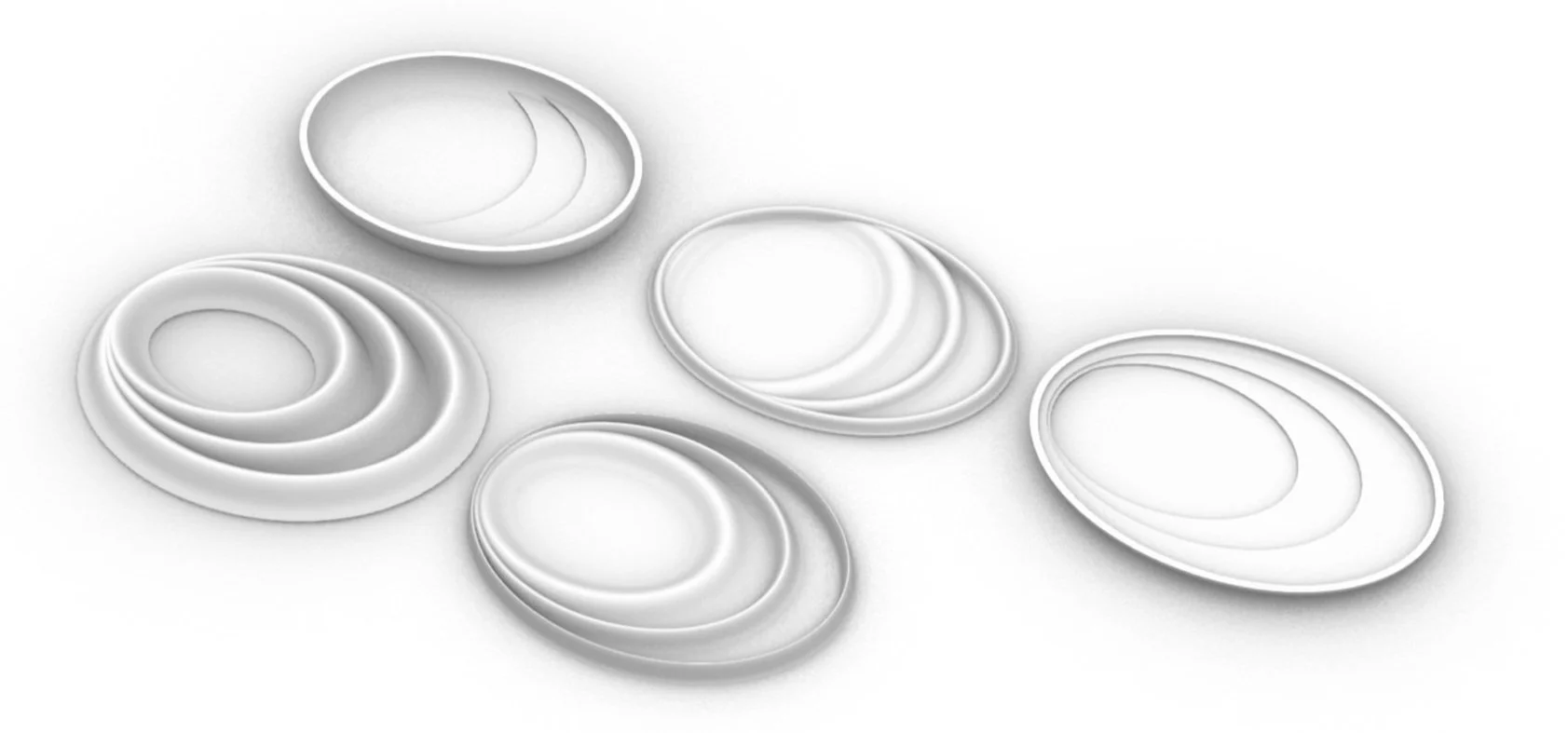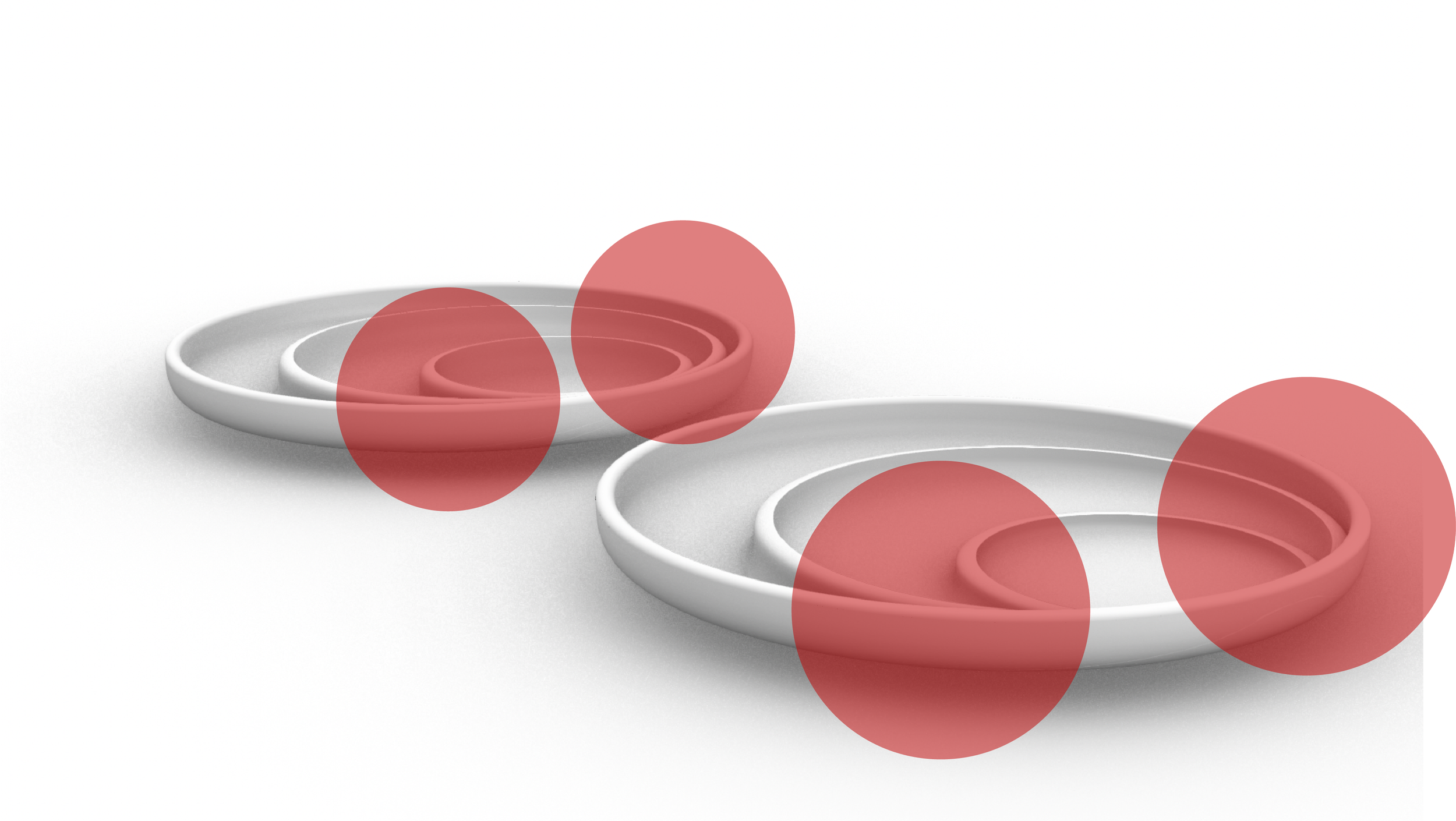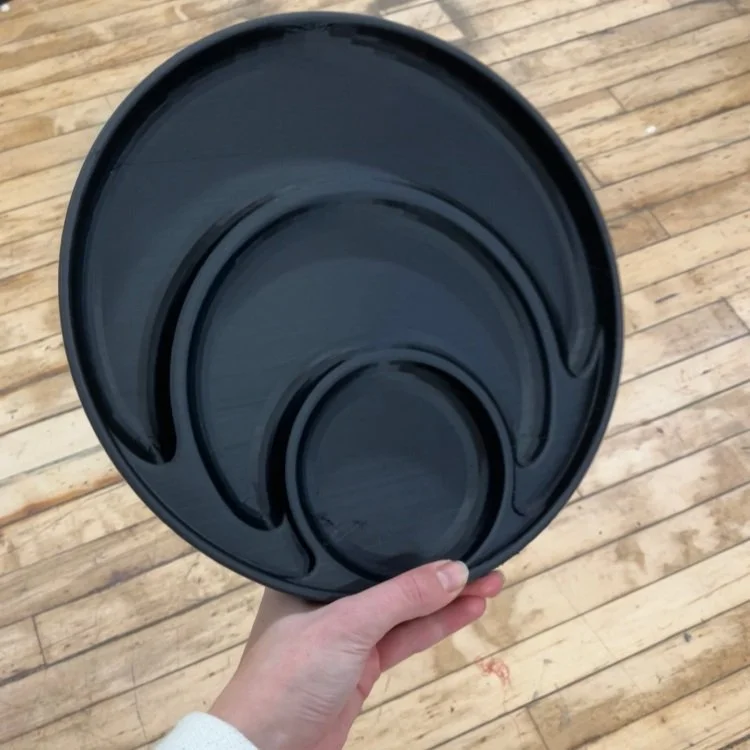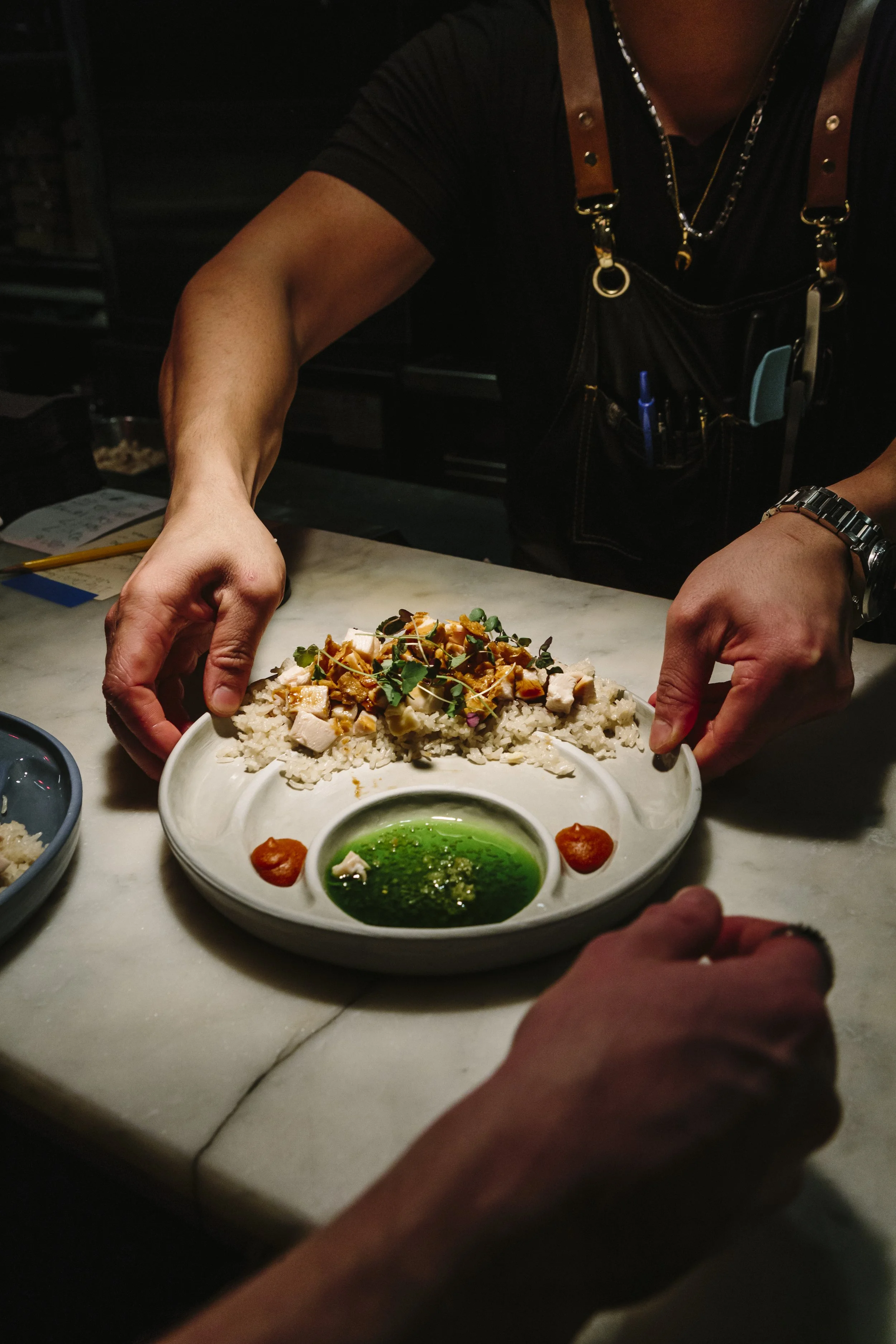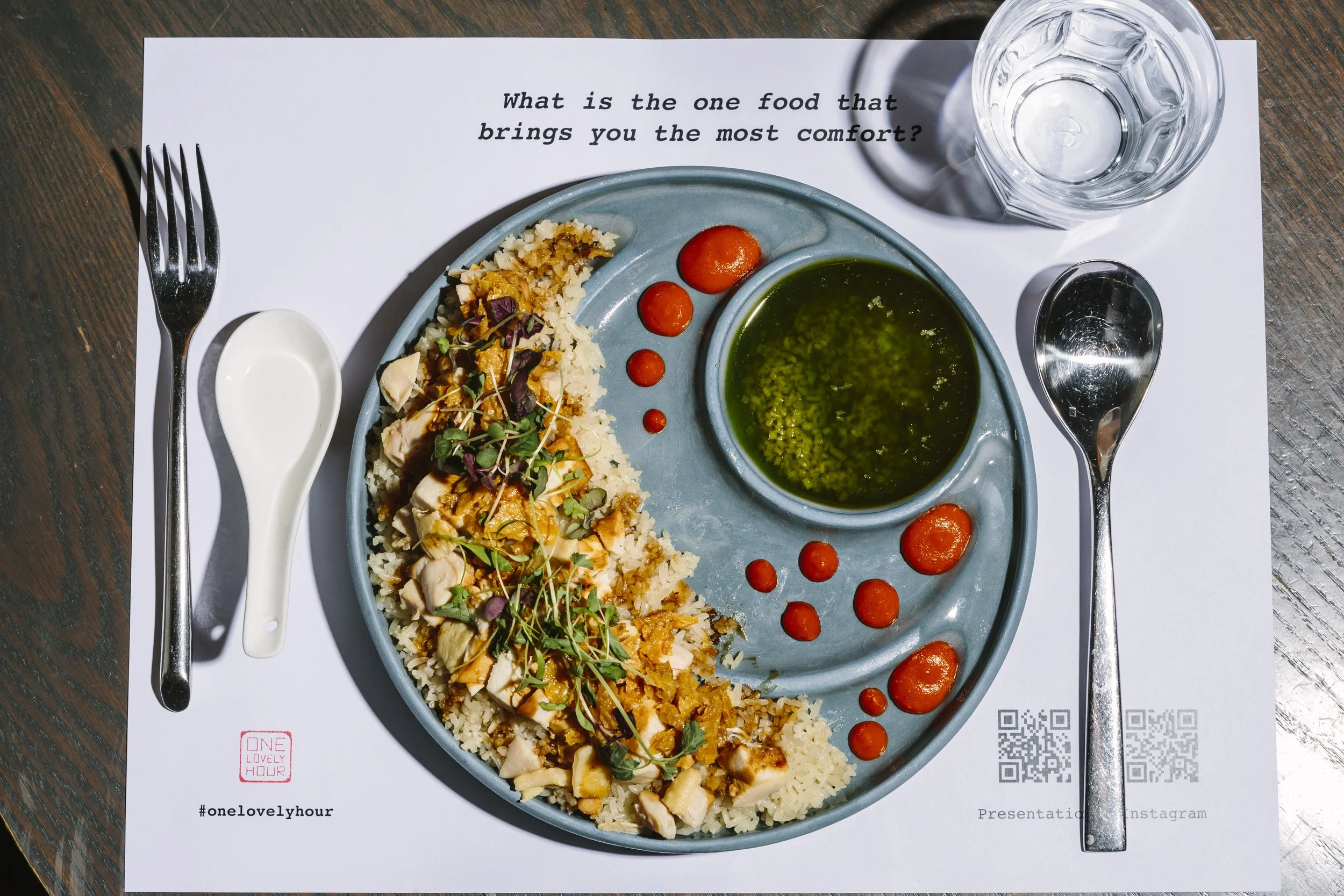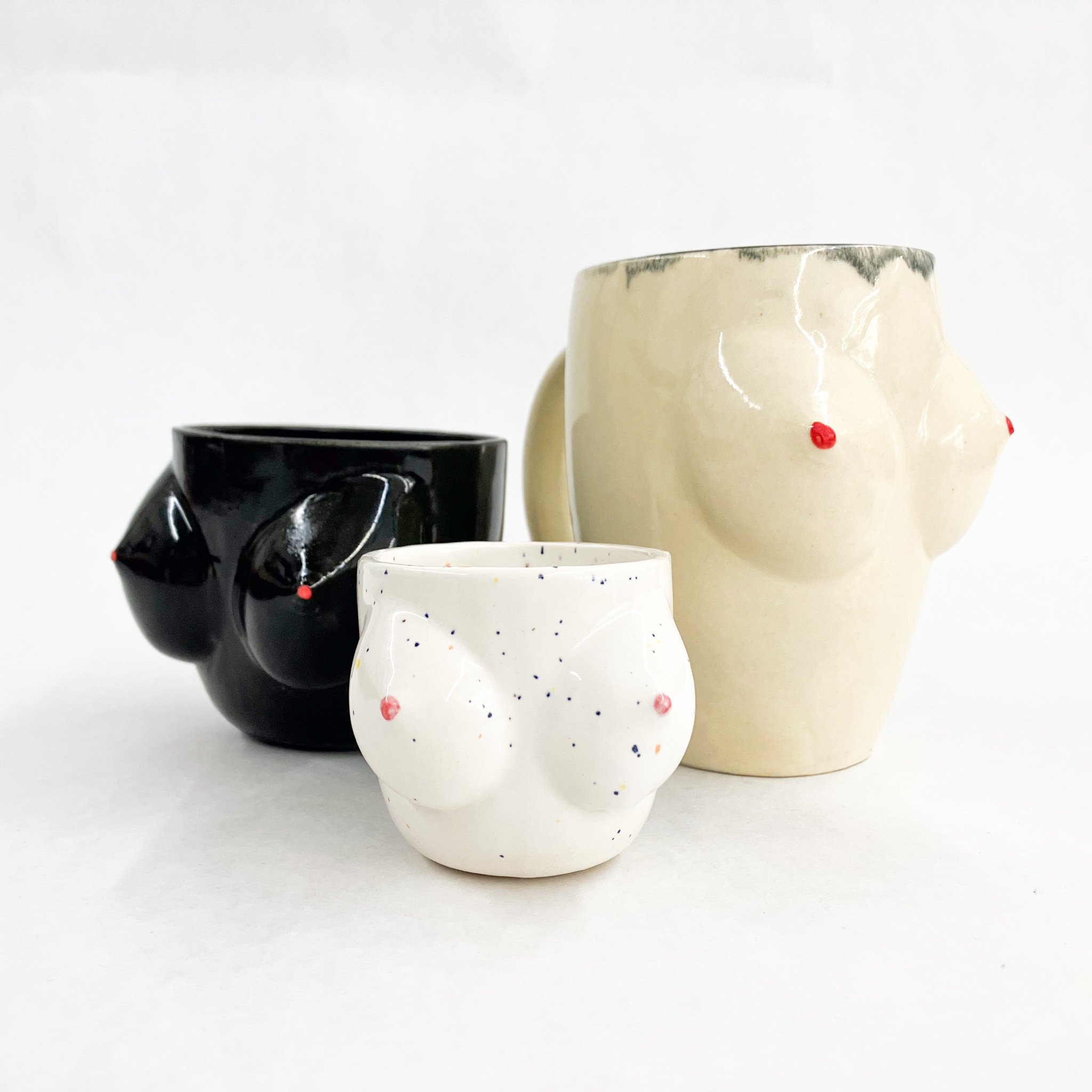One Lovely Hour: The Making of a Plate
Fall 2022*
Photo by Gabriel Li
One lovely Hour is a research project focused on the mealtime routines of elderly dementia patients living in long-term care facilities. For this project, a slip cast ceramic plate was created for a dinner which took placed during DesignTO, 2023.
*Recipient of the DesignTO Juror’s Choice Awards, January 2023
**Participation in this project was through a graduate assistantship with Professor Amanda Huynh (Pratt Institute), and Ranee Lee (OCAD).
Early “napkin sketches” were made by Amanda Huynh and Ranee Lee, and were the starting point for the design of the plate. One of the first constraints was that the plate should have ridges to create spatial delineation.
Preliminary Sketches
Digital Sketching: Digital sketches were made next to test a few of the different ways the delineations could be made.
After a few rounds of back and forth feedback and codesign sessions with Amanda and Ranee, and many more iterations, the plate started to take form.
Continued Digital Modeling
Results: A dinner plate with three distinct regions, that could separate food. One version had a constant rim height, while the other featured a stepped rim, corresponding with the ridges.
Designing for Dishwashing
Since the plates were for use in a commercial setting, they had to be easy to clean in a dishwasher.
Results: The highlighted areas show potential places where food could get trapped on the plate’s surface, making washing and disinfecting in a dishwasher nearly impossible.
Once a design had been created, it was necessary to make a full scale prototype, that would then be used to make a mould for slip casting.
Preliminary Prototyping
Results: The plate was easy to use with a spoon, and had the necessary spatial delineation needed for different foods. However, the consistent rim height, and raised areas felt clunky and indelicate.
Since dementia patients often do not have access to forks and knives, the plate had to be easy to use with a spoon as the primary utensil.
Designing for Spoons
Results: Creation of curved pockets in the corners of the plate’s delineated spaces to encourage scooping with a spoon, and using the plate as a pusher, in place of a knife.
Results: Giving the plate a stepped rim made the shape felt more elegant and refined. After sanding, the prototype was ready to be cast in plaster for the mould that would be used for slip casting.
Prototype Refinement
To address the heaviness of the plate, the secondary rim was pushed down to create a more stepped design.
Once the prototype plate was fully sanded and finished, it was sent to Huey Lighting in Ontario, Canada for mould-making and production.
First Edition Production
Challenges: The plate was to be delicate and thin, which can be hard to achieve in slip casting of flat objects, due to slumping in the kiln. Therefore, the plates, which still showed sagging, had to be fired face-down.
Complications: Each plate had a hole in the bottom, leftover from the slip casting process. The holes ranged from almost non-existent to a large enough gap for water or food to get into the hollow center of the plate during washing.
Complications: The rims of the plates were left unglazed for firing purposes. While technically food safe, this made them more susceptible to wear and tear, and harder to thoroughly clean.
To address some of the issues that came about during production of the first plates, a second edition of the plates was made for an NYCxDesign event that took place in May 2023.
Second Edition Production
Changes: The mould was remade so that the plate could be cast solid to remove the hole in the bottom, and to make the overall profile thinner.
Changes: Since the plate was now solid, a 3D printed logo could be pressed into the bottom.
Changes: New glaze colors and patterns were tested on the newly fabricated plate at this time.
Design Outcome: A thinner, lighter plate with less sagging, no hole in the bottom, and a logo.
Photos by Gabriel Li
Other Work to Check Out!

